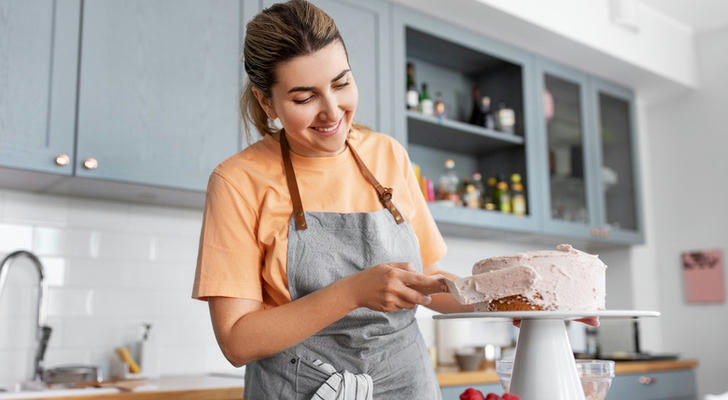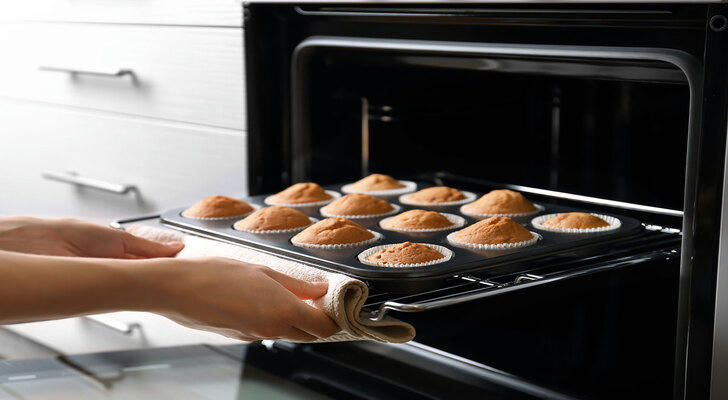How to Bake the Perfect Cake: A Step-by-Step Guide for Beginners
Baking a cake might seem like a daunting task, but with a few simple steps and some helpful tips, anyone can create a delicious masterpiece. Whether you're a beginner or just looking to improve your baking skills, this guide will walk you through the process of making the perfect cake from scratch.

1. Gather Your Ingredients
The first step in making a cake is gathering all your ingredients. The right ingredients in the right amounts are crucial for a successful outcome. Here's a basic list of what you’ll need for a simple cake:
• 2 cups of all-purpose flour
• 1 cup of sugar
• 1/2 cup of butter (room temperature)
• 2 eggs
• 1 cup of milk
• 2 teaspoons of baking powder
• 1 teaspoon of vanilla extract
• A pinch of salt
It’s essential to measure your ingredients precisely. A small change in the quantity of flour or sugar can affect the texture and taste of the cake. For instance, too much flour can make the cake dense, while too little can make it fall apart.
2. Preheat the Oven
Before you start mixing, preheat your oven to 350°F (175°C). The reason this step is important is that the temperature of the oven directly affects how your cake rises and bakes. Starting with a hot oven helps the batter rise evenly and gives you that soft, fluffy texture we all love in a cake. A few minutes of preheating can make a big difference.
3. Mix the Wet Ingredients
In a large bowl, start by creaming the butter and sugar together. Use a hand mixer or a stand mixer on medium speed until the mixture is light and fluffy. This process helps to incorporate air into the batter, giving the cake a lighter texture.
Once the butter and sugar are well combined, add the eggs one at a time, beating well after each addition. After the eggs are fully incorporated, add the vanilla extract for a lovely, aromatic flavor.
4. Incorporate the Dry Ingredients
Next, it’s time to add the dry ingredients: flour, baking powder, and salt. Begin by sifting the flour to remove any lumps and ensure an even texture. Gradually add the flour mixture to the wet ingredients, alternating with the milk. Start and finish with the flour, mixing just until combined.
Overmixing at this stage can lead to a tough cake, so be gentle and stop once everything is incorporated. A smooth, lump-free batter is ideal.
5. Bake the Cake
Once the batter is ready, pour it into a greased and floured cake pan. A round 9-inch pan is ideal for most recipes, but you can adjust the pan size depending on the recipe. The batter should be level in the pan to ensure even baking.
Bake the cake in the preheated oven for about 30-35 minutes. To check if the cake is done, insert a toothpick into the center. If it comes out clean, the cake is ready. Avoid opening the oven door too often, as this can cause the cake to sink.

6. Cool and Decorate
Once your cake is baked, let it cool in the pan for 10 minutes. This makes it easier to remove from the pan without breaking. Afterward, transfer it to a wire rack to cool completely before frosting.
Frosting is where you can get creative. You can go with a classic buttercream, chocolate ganache, or even a light whipped cream topping. For a simple buttercream, mix together softened butter, powdered sugar, vanilla extract, and a little milk until smooth and creamy.
Spread the frosting evenly over the cake and, if desired, add some sprinkles, fresh fruit, or chocolate shavings for decoration.
Why Cake-Baking is a Science
Baking is often called a science because of how precise the process is. Ingredients like baking powder, which acts as a leavening agent, are crucial to the texture of your cake. Without it, your cake may not rise properly. In fact, the average cake rises by approximately 1.5 to 2 inches during baking, depending on the recipe.
Did you know?
The temperature of your oven can directly impact how your cake bakes. A 10-degree difference in temperature can change how the cake rises, with too hot an oven leading to a burnt exterior and undercooked interior, while too cool an oven can result in a dense, heavy cake.
Tips for Perfect Cake Texture
Room-Temperature Ingredients: Always use room-temperature butter, eggs, and milk. Cold ingredients can cause the batter to seize up, leading to uneven mixing and poor texture.
Don’t Overmix: Overmixing the batter will activate the gluten in the flour, making the cake tough instead of light and airy.
Use Fresh Ingredients: Ensure your baking powder and flour are fresh. Old baking powder may not rise effectively, leaving you with a flat cake.
Common Cake-Baking Mistakes to Avoid
• Using cold ingredients: As mentioned, room temperature is key for smooth mixing.
• Not measuring ingredients properly: A cup of flour can vary greatly depending on how you scoop it. For more accurate measurements, use a kitchen scale.
• Opening the oven door too early: This can cause the cake to sink or bake unevenly.
With these tips and a little practice, anyone can master the art of baking a perfect cake. Whether it’s for a birthday, a special occasion, or just because you’re in the mood for something sweet, you’ll have the knowledge and skills to impress with every bake. Happy baking!
